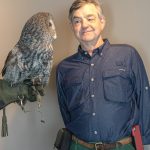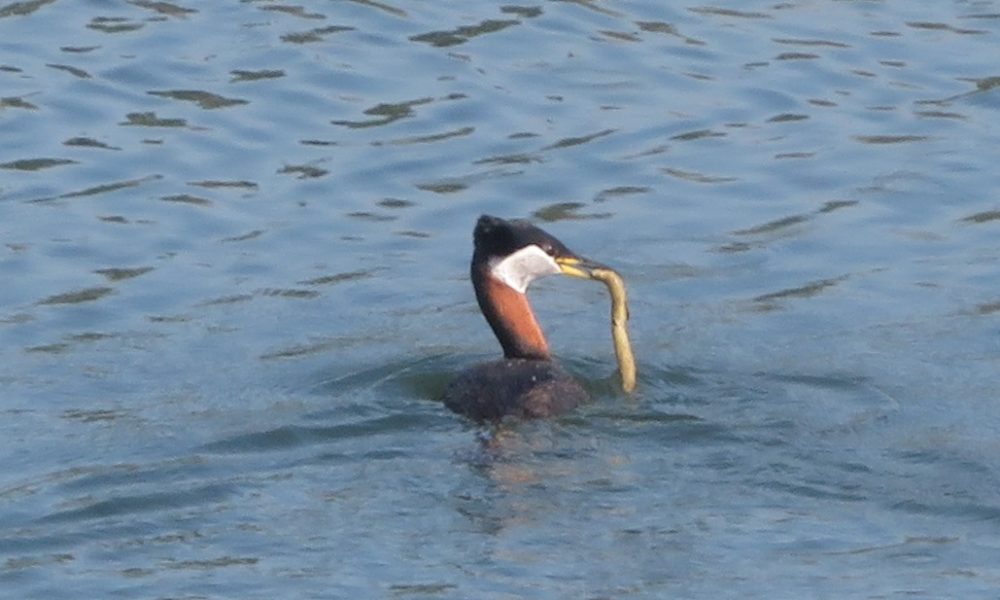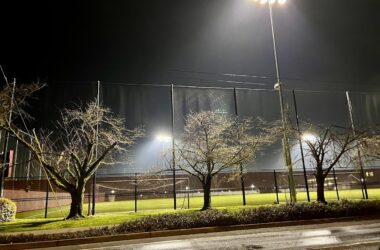Our Prius required attention — time for oil change and check-up. So off we (the car and I) went to the Toyota dealership in north Salem. That meant hot chocolate from the coffee stand, and time birding at Capitol Lake.
If I had listed what I foresaw seeing, it would have been: swallows, mallards, song sparrows, maybe a robin or heron or curious osprey. If I had been asked to list the 100 most likely species there, I would’ve added warblers in the willows, blackbirds, finches, migrant vireo or flycatcher, may another raptor or two, green heron, cormorant, coots, a shorebird or two.
It would have been hard to list 100 birds that could be expected in such a habitat surrounded by cars and people and traffic sounds. When I first got to the lake with my cocoa it was as expected: violet-green swallows circling, two coots swimming, several mallards lounging onshore, a song sparrow singing, yellow-rumps with their three-note spring “song.” But then, the extraordinary among the ordinary.
This is the first time I have seen a red-necked grebe in full breeding plumage. All my previous sightings have been coastal wintering birds in drab wintry outfits. The last time I saw this species was September 2021, at Newport. A far more likely place than Capitol Lake. A few of these grebes winter along the coast south of here. Their breeding habitat is primarily in Canada and Alaska and then across the Northern Hemisphere. They use ponds with emergent vegetation. They are about 18 inches long with a two-foot wingspan.
This grebe ended up not swallowing what was in its beak, but spitting it out. The creature or object sank immediately, did not float, so it was dense.

The grebe and his reality are reminders about the very core of birding. You never know.
Even about common birds you see every day, there can be uncertainty. Crows on the power lines, robin on the lawn, starlings at the parking lot — all these can and will surprise you. With birds who migrate, chance and surprise and change are inevitable. Blown or flown off course, hunger requiring a quick stop, predator forcing a course change. Any of these and other things we don’t even comprehend can bring a bird to an unusual spot. Or bring an unusual bird to a usual spot. Nature can easily put the extraordinary among the ordinary. So keep watching.
Binoculars, never leave home without them.
For information about upcoming Salem Audubon programs and activities, see www.salemaudubon.org, or Salem Audubon’s Facebook page.
Harry Fuller is an Oregon birder and natural history author of “Freeway Birding.” He is a member of the Salem Audubon Society. Contact him at [email protected] or atowhee.blog. His “Some Fascinating Things About Birds” column appears regularly in Salem Reporter.
JUST THE FACTS, FOR SALEM – We report on your community with care and depth, fairness and accuracy. Get local news that matters to you. Subscribe to Salem Reporter. Click I want to subscribe!

Harry Fuller is an Oregon birder and natural history author of three books: “Freeway Birding,” "Great Gray Owls of California, Oregon and Washington," and "San Francisco's Natural History--Sand Dunes to Streetcars." He leads birding trips for the Malheur Field Station. He is a member of the Salem Audubon Society, and leads bird trips locally. Harry has just published a new book, BIrding Harney County.









